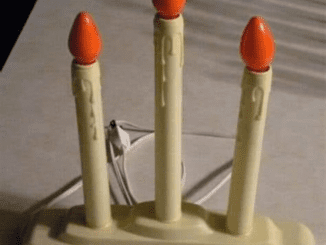If you’re a fan of mysteries and brain teasers, you’re in for a treat! A baffling crime scene has emerged, and it’s up to you to identify the killer by using observation and logical reasoning. Here’s the scenario: a woman has been found dead on a bathroom floor, and three suspects are nearby, each holding a potential weapon. Who among them is the true murderer? It’s not as straightforward as it seems, so let’s dig into the details and see if you can crack the case.

The Crime Scene: Meet the Suspects
Here’s what we know about the crime scene:
- A woman has been found dead in the bathroom.
- Three suspects are standing near the body, each with a different object:
- The Caretaker — holding a rope.
- The Waitress — holding a gun.
- The Chef — holding knives and covered in blood.
Our mission is to identify the killer by examining each suspect, their potential weapon, and the clues from the crime scene. This may sound simple, but puzzles like this one often have misleading elements designed to throw us off track. Let’s proceed carefully to solve this mystery.
Common Mistakes People Make When Solving Crime Puzzles
Before diving into the solution, it’s worth noting some common errors people make with puzzles like this:
- Jumping to Conclusions Based on Appearances – The chef, covered in blood and holding knives, may immediately appear guilty. But appearances can be deceiving, and in puzzles, such obvious clues can sometimes be “red herrings” meant to distract you.
- Overlooking Details About the Victim – Key details, such as the victim’s posture or expression, might reveal clues about how she died. Ignoring these details can lead to the wrong conclusions.
- Not Analyzing the Weapons Logically – Just because someone is holding a weapon doesn’t mean they used it. Think about the weapon’s practicality and whether it matches the clues on the victim.
Now, let’s analyze the scene step-by-step and see if we can identify the real killer.
Step-by-Step Solution: Who Is the Killer?
1. Analyze the Victim’s Body for Clues
The first thing to do in any crime puzzle is to observe the victim. The puzzle tells us that the woman was found lying on the bathroom floor, but there’s no mention of any visible gunshot wounds or stab wounds on her body. This is a crucial detail because it suggests that neither the gun nor the knives were used in the murder.
If the woman had been shot, we would expect to see a gunshot wound. If she had been stabbed, there would be puncture marks or visible injuries. Since neither of these signs are mentioned, we can start to rule out the weapons held by the waitress (the gun) and the chef (the knives).
2. Look for Signs of Strangulation
Another important clue lies in the potential signs of strangulation. If the victim’s mouth is open, or if her face shows signs of distress, it could indicate that she struggled to breathe, which is often seen in cases of strangulation. This clue aligns with the rope held by the caretaker and makes strangulation a likely cause of death.
With no visible wounds but signs pointing to asphyxiation, we can reasonably assume that the murder weapon was likely the rope, which would make the caretaker a prime suspect.
3. Evaluate Each Weapon’s Practicality
Now, let’s examine the practicality of each weapon:
- The Caretaker (A): Holding a rope. Given that strangulation is suspected, the rope makes sense as the murder weapon. It’s also relatively silent, which would be suitable in a scenario like this.
- The Waitress (B): Holding a gun. Since there are no gunshot wounds on the victim, it’s safe to rule out the gun as the murder weapon.
- The Chef (C): Holding knives and covered in blood. Although the knives are concerning, the absence of stab wounds means they probably weren’t used in the crime. The blood could be a deliberate distraction or from a different source.
Based on this evaluation, the caretaker’s rope is the only weapon that fits the suspected cause of death—strangulation.
4. Eliminate the Other Suspects
With our analysis in mind, let’s eliminate the other suspects:
- The Waitress: Since there’s no gunshot wound on the victim, we can confidently rule out the waitress and her gun.
- The Chef: Despite his suspiciously bloody appearance, there are no stab wounds, which rules out the knives as the murder weapon. The blood could be unrelated or simply there to mislead us.
This leaves the caretaker as the only viable suspect. The rope aligns perfectly with the suspected cause of death, making it the most likely murder weapon.
Conclusion: The Caretaker is the Killer

After thoroughly analyzing the evidence, it’s clear that the caretaker is the killer. The rope he holds matches the signs of strangulation observed on the victim, making it the most plausible cause of death. With no evidence of gunshot or stab wounds, the gun and knives are ruled out, leaving the caretaker’s rope as the logical murder weapon.
Final Thoughts: Did You Crack the Case?
So, did you figure out who the killer was? If you identified the caretaker as the murderer, well done! This puzzle was designed to test your ability to look past obvious distractions, like the chef’s bloody appearance, and focus on the subtle clues. The key to solving it was in carefully examining the victim’s body and logically matching the weapons with the cause of death.
Crime puzzles like this one are not only fun but also great for exercising your brain, enhancing your attention to detail, and improving your logical reasoning skills. They challenge you to think critically and analyze each clue carefully, helping to sharpen your mind.
Ready for More Mystery Puzzles?
If you enjoyed solving this mystery, why not try more logic puzzles and brain teasers? There are plenty of mind-bending challenges out there that can push your problem-solving skills even further. Each puzzle you tackle builds your critical thinking abilities and trains your mind to stay sharp.
So keep solving, stay curious, and remember: in the world of puzzles and mysteries, not everything is as it appears. Sometimes, the answer lies in the details, waiting for a keen observer like you to uncover the truth. Happy puzzling!


